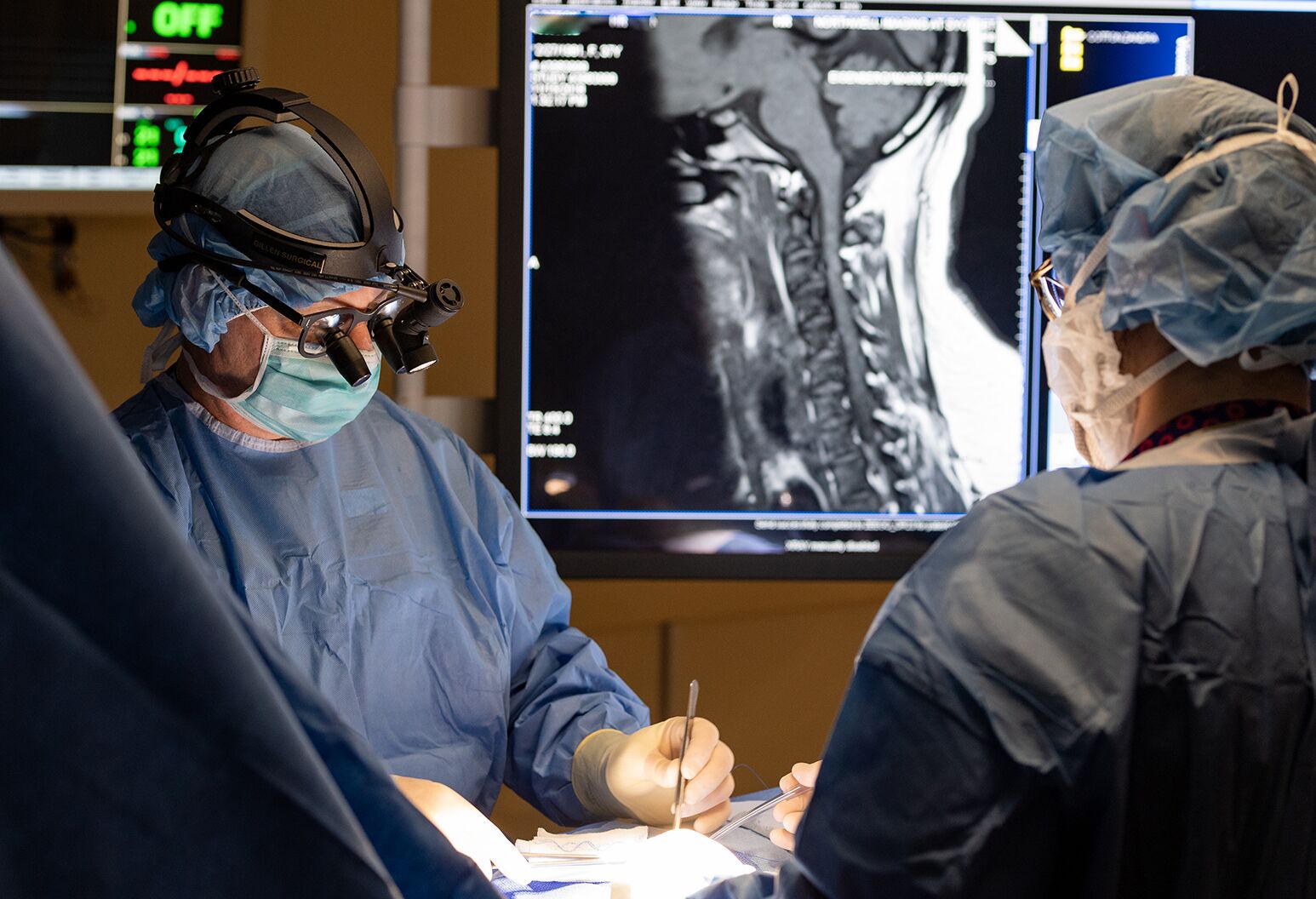Tips for Recuperation After Surgical Treatment with the Best Spine Surgeons in St Louis MO
Tips for Recuperation After Surgical Treatment with the Best Spine Surgeons in St Louis MO
Blog Article
An Introduction of Spine Problems That Frequently Lead To Surgical Treatments
Spine conditions such as herniated discs, spinal constriction, and degenerative disc illness often necessitate medical treatments when conservative treatments fall short to reduce consistent signs and symptoms. Comprehending the subtleties of each condition and the matching medical alternatives, such as discectomy or spine combination, is important for reliable management.
Herniated Discs
Although many individuals with herniated discs may discover alleviation through conservative therapies, surgery becomes a needed factor to consider when signs and symptoms persist or aggravate - best spine surgeons in st louis mo. A herniated disc happens when the soft inner gel of a back disc sticks out through its outer layer, potentially compressing neighboring nerves and leading to discomfort, tingling, or weak point in the extremities
Traditional administration usually consists of physical treatment, pain medicines, and corticosteroid injections, which aim to reduce swelling and boost feature. In cases where these approaches fail to reduce devastating signs, surgical choices may be explored.
One of the most typical medical treatment for herniated discs is a discectomy, which entails the removal of the herniated part of the disc to ease stress on the impacted nerve root. In a lot more extreme cases, spine combination might be needed to maintain the affected vertebrae.
Clients are suggested to go over the possible threats and benefits of surgical procedure with their doctor to make a notified choice. Eventually, the goal of any surgical intervention is to recover feature, relieve discomfort, and boost total lifestyle for individuals dealing with herniated discs.
Spine Stenosis
Back stenosis happens when the spaces within the spinal column slim, bring about enhanced pressure on the spine and nerves. This problem can create in numerous regions of the spinal column, consisting of the cervical and back areas, commonly because of age-related adjustments, such as degenerative disc disease, joint inflammation, or thickening of tendons.
Clients with spine constriction may offer with signs and symptoms that include pain, numbness, tingling, or weakness, largely in the arms or legs. These signs and symptoms can be worsened by tasks that entail standing or walking, frequently leading people to seek relief with traditional therapies like physical treatment, medications, or epidural steroid injections.
Nonetheless, when these non-surgical interventions stop working to supply sufficient relief, medical alternatives might be considered. Usual operations for spine stenosis consist of laminectomy, which includes the removal of part of the vertebra to alleviate stress, and spinal fusion, which supports the affected location. The decision to seek surgery is usually based upon the seriousness of symptoms, the level of useful impairment, and the general health and wellness of the patient. Motivate diagnosis and monitoring are vital to avoid further neurological concession and improve lifestyle.
Spondylolisthesis
Spondylolisthesis occurs when one vertebra slips onward over one more, causing imbalance of the spinal column. This problem can arise from various aspects, including congenital issues, injury, or degenerative changes in the spinal column. It is most typically observed in the lumbar region, particularly at the L4-L5 and L5-S1 levels.

Therapy choices vary based upon the seriousness of the slippage and the signs and symptoms presented. Conventional steps, consisting of physical treatment, discomfort administration, and activity adjustment, are commonly the very first line of defense. When non-surgical methods fall short to relieve symptoms or when substantial nerve compression is existing, surgical intervention might be warranted. Surgical options can include back combination or decompression treatments, targeted at bring back positioning and minimizing neurological signs. Early medical diagnosis and appropriate administration are vital for ideal outcomes in patients with spondylolisthesis.
Degenerative Disc Illness

Individuals with DDD often experience discomfort that may radiate to the arms or legs, relying on the influenced area of the back. The condition can be identified with a combination of clinical assessment, imaging studies, and patient background. Therapy choices commonly begin with conservative actions, consisting of physical treatment, discomfort administration, and way of living alterations. Nevertheless, when these methods stop working to offer sufficient relief, medical treatments might be thought about.
Surgical options for DDD may include back combination or man-made disc substitute, aimed at supporting the impacted sector and reducing discomfort (best spine surgeons in st louis mo). Ultimately, the choice of therapy is individualized, taking right into account the extent of the condition, client health, and lifestyle variables
Spine Growths

Back growths can occur from various variables, consisting of hereditary predisposition, environmental influences, and pre-existing medical conditions. People might present with an array of signs and symptoms, consisting of local pain, neurological shortages, weak point, or changes in digestive tract and bladder function, depending on the tumor's size and useful link place.
Diagnosis typically includes imaging studies such as MRI or CT checks, which help delineate the growth's characteristics and influence on bordering structures. In evaluating treatment choices, the tumor's quality, type, and area are important considerations. Surgical treatment may be necessitated to reduce signs and symptoms, get a biopsy, or remove the growth entirely. The goal of surgical procedure is typically to unwind neural aspects and maintain the spinal column. Adjuvant therapies, consisting of radiation or chemotherapy, may likewise be needed depending on the growth's nature. Early detection and treatment are important for maximizing results in individuals with spinal lumps.
Final Thought
In recap, spine conditions such as herniated discs, back stenosis, spondylolisthesis, degenerative disc disease, and spinal growths regularly necessitate medical treatment as a result of their possible to create considerable pain and functional impairment. While traditional treatments may use short-term relief, medical options come to be crucial when symptoms linger or aggravate. Prompt diagnosis and intervention play a crucial function in restoring feature and improving the high quality of life for afflicted people, highlighting the importance of comprehensive back treatment.

Report this page